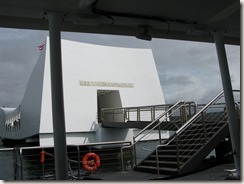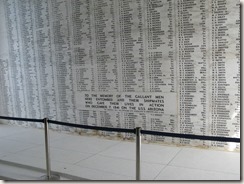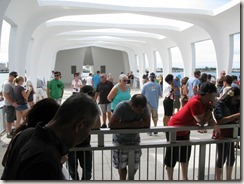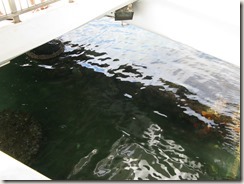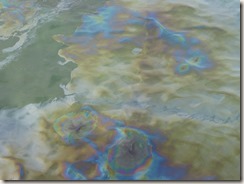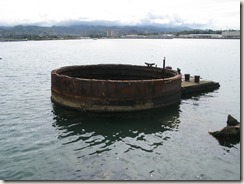Oahu - Day 2 - Pearl Harbor
Today I visited Pearl Harbor for the first time. As a reader of World War II history, I'd always wanted to see the location where the United States was attacked by Japan, where the course of the war was altered. I wasn't disappointed.
The part that we visited today is actually a National Park called "World War II Valor in the Pacific National Monument," which contains memorials for the U.S.S. Arizona, Oklahoma, and Utah. There are other things you can see as well, including the battleship U.S.S. Missouri, the U.S.S. Bowfin submarine, and an air museum.
We started with the Arizona Memorial.
Meeting a Pearl Harbor Survivor
After watching a short film that explained why the Japanese attacked Pearl Harbor, you're handed off from the National Park Rangers to the military to ride a Navy launch out to the Arizona Memorial.
On this particular day, a Pearl Harbor survivor joined us: 95-year old Staff Sergeant Herb Weatherwax. It was incredibly moving to see the respect paid to Mr. Weatherwax by the Navy. He was allowed to enter and exit the memorial first. He received salutes from the Navy personnel, applause from the civilians. He was like a rock star.
Herb Weatherwax was there when Oahu was attacked. He heard the explosions, saw the aircraft diving in, watched the destruction. Later on, I read that he went on to fight in the entire War -- both in Europe and the Pacific.
The Arizona Memorial
The memorial itself is built above the wreckage, but doesn't actually touch it. The architect Alfred Preis said of its design, "Wherein the structure sags in the center but stands strong and vigorous at the ends, expresses initial defeat and ultimate victory ... The overall effect is one of serenity. Overtones of sadness have been omitted to permit the individual to contemplate his own personal responses ... his innermost feelings."
Once at the memorial, we walked to the shrine room that honors the 1,771 men who died on the Arizona that Sunday morning in 1941. It's an overwhelming experience to see all those names.
In another section of the memorial, you look down into the wreckage of the Arizona.
Oil from the vessel still leaks steadily to the surface, sometimes referred to as "the tears of the Arizona." I was surprised how much oil leaked during the time I was there. I watched several drops rise to the surface and then expand into rainbows before adding to the oil slick.
Off to one side of the memorial, you see one of Arizona's rusty turrets above the surface.
On the other side, you see the Battleship Missouri -- almost as if it's standing watch over the the Arizona and her memory. And then it hits you: Here you have where World War II began for the United States and where it ended.
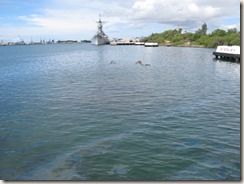
After 15 minutes, it was time to get back aboard the Navy launch and head back to the park. This really wasn't enough time for me to reflect on what had happened here all those years ago. But I found the Arizona memorial stayed with me long after I left.
